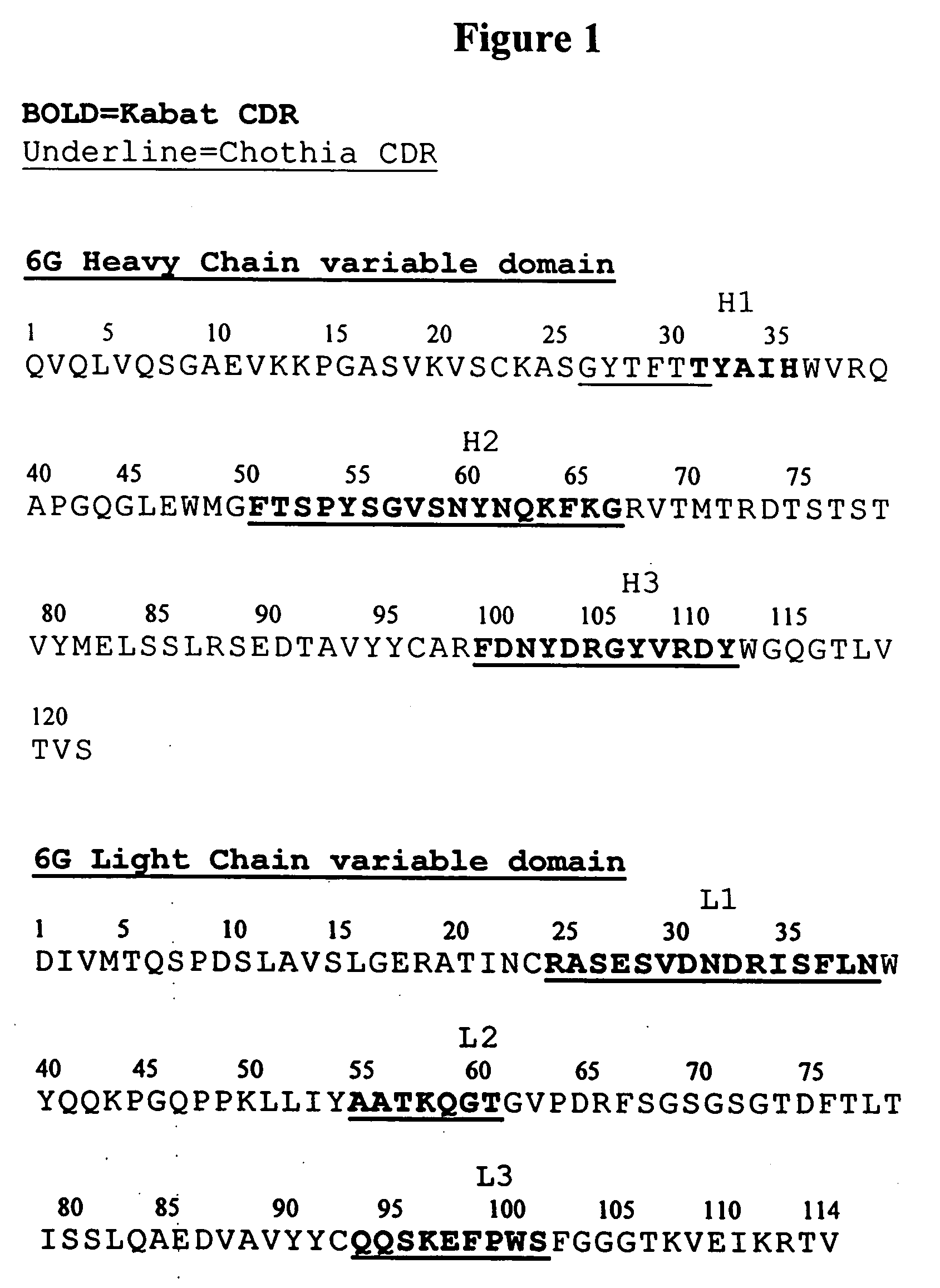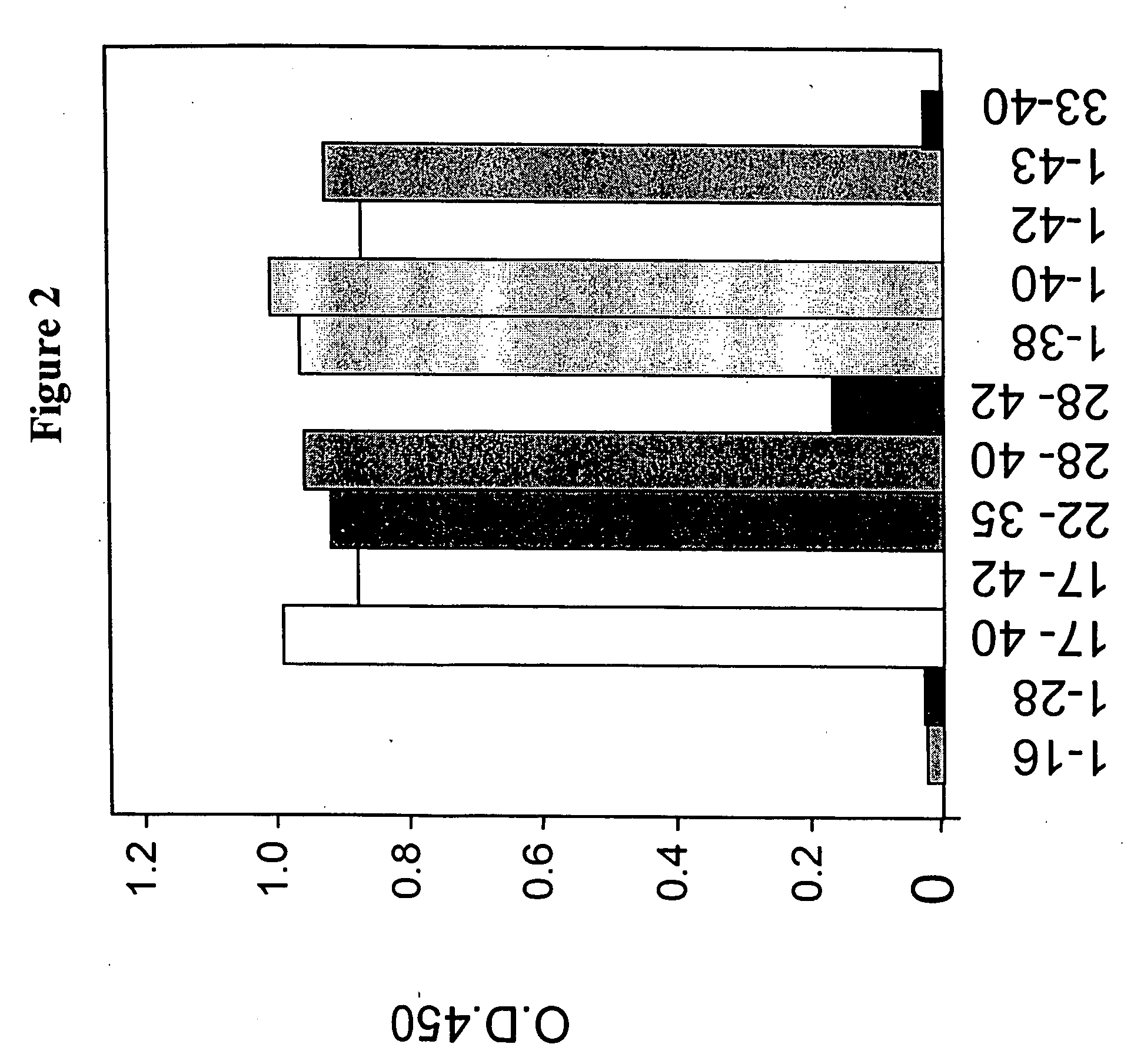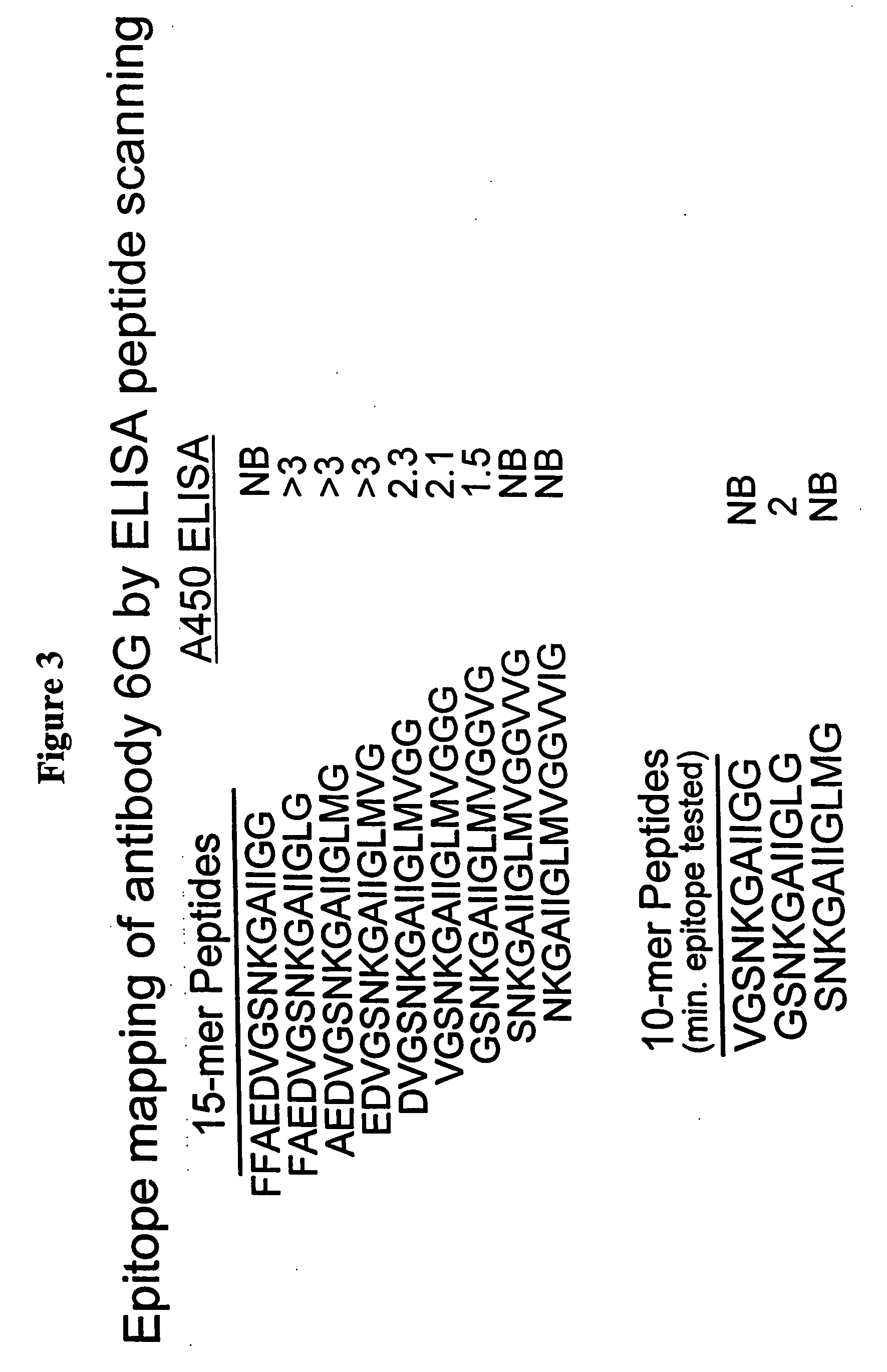Antibodies directed against amyloid-beta peptide and methods using same
a technology of amyloidbeta and antibodies, applied in the field of amyloidbeta peptide antibodies, can solve the problems of non-fc-mediated mechanisms, suspension of trials of vaccines including a1-42, etc., and achieve the effect of higher affinity and higher affinity
- Summary
- Abstract
- Description
- Claims
- Application Information
AI Technical Summary
Benefits of technology
Problems solved by technology
Method used
Image
Examples
example 1
Binding Affinity Determination of Antibody 6G and its Variants
A. General Methods
[0207] The following general methods were used in this example and other examples.
[0208] Expression Vector Used in Clone Characterization
[0209] Expression of the Fab fragment of the antibodies was under control of an IPTG inducible lacZ promotor similar to that described in Barbas (2001) Phage display; a laboratory manual, Cold Spring Harbor, N.Y., Cold Spring Harbor Laboratory Press pg 2.10. Vector pComb3X), however, modifications included addition and expression of the following additional domains: the human Kappa light chain constant domain and the CHI constant domain of IgG2a human immunoglobulin, Ig gamma-2 chain C region, protein accession number P01859; Immunoglobulin kappa light chain (homosapiens), protein accession number CAA09181.
[0210] Small Scale Fab Preparation
[0211] Small scale expression of Fabs in 96 wells plates was carried out as follows. Starting from E. coli transformed with a...
example 2
Characterization of Epitope on Aβ Peptide that Antibody 6G Binds
[0226] To determine the epitope on Aβ peptide that is recognized by antibody 6G, ELISA binding analysis was used. Various Aβ peptides (Global Peptide Services, CO) was immobilized on a ELISA plate. The binding of 6G full antibody (at 20 nM) to the immobilized Aβ was determined by ELISA as described above. Amino acid sequences of Aβ1-40, Aβ1-42, and Aβ143 are shown in Table 5 below. As shown in FIG. 2, antibody 6G binds to Aβ peptides 17-40, 17-42, 22-35, 28-40, 1-38, 1-40, 1-42, 1-43, and 28-42; but binding to 28-42 is much weaker than the other Aβ peptides. Antibody 6G did not bind to Aβ peptide 1-16, 1-28 and 33-40. Thus, antibody 6G binds to the C-terminus of various truncated Aβ peptide, for example, 22-35, 1-38, 1-40, 1-42, and 1-43.
[0227] Table 4 below shows binding affinity comparison of 6G to Aβ1-40 to other Aβ peptide as measured by koff (1 / s) using Biacore assay. Antibody 6G binds to Aβ1-40 with highest affi...
example 3
Characterization of Epitope on Aβ Peptide that Antibody 2294 Binds
[0232] Antibody 2294 is a murine antibody raised by immunizing a mouse with Aβ1-40. This antibody is described in US 2004 / 0146512 and WO 04 / 032868.
[0233] Binding affinity for antibody 2294 to Aβ1-40, Aβ1-42, or Aβ22-37 was measured using Biacore as described above. Table 6 below shows the affinity of antibody 2294 Fab fragment to various Aβ peptides.
TABLE 6Binding affinity of antibody 2294 Fab fragmentkon (1 / Ms)koff (1 / s)KD (nM)Biotinylated Aβ1-406.6 × 1043.95 × 10−46immobilized onstreptavidin chip, 2294Fab flowed onto itBiotinylated Aβ1-421.1 × 1044.87 × 10−3400immobilized onstreptavidin chip, 2294Fab flowed onto itBiotinylated Aβ22-37 5 × 1030.04910,000immobilized onstreptavidin chip, 2294Fab flowed onto it
[0234] Epitope mapping of antibody 2294 was performed by ELISA assay. Biotinylated 15-mer or 10-mer of various Aβ peptides (these peptides have glycine added to the C-terminal end) were immobilized on strepta...
PUM
| Property | Measurement | Unit |
|---|---|---|
| Magnetic field | aaaaa | aaaaa |
| Molar density | aaaaa | aaaaa |
| Molar density | aaaaa | aaaaa |
Abstract
Description
Claims
Application Information
 Login to View More
Login to View More - R&D
- Intellectual Property
- Life Sciences
- Materials
- Tech Scout
- Unparalleled Data Quality
- Higher Quality Content
- 60% Fewer Hallucinations
Browse by: Latest US Patents, China's latest patents, Technical Efficacy Thesaurus, Application Domain, Technology Topic, Popular Technical Reports.
© 2025 PatSnap. All rights reserved.Legal|Privacy policy|Modern Slavery Act Transparency Statement|Sitemap|About US| Contact US: help@patsnap.com



